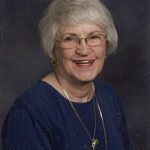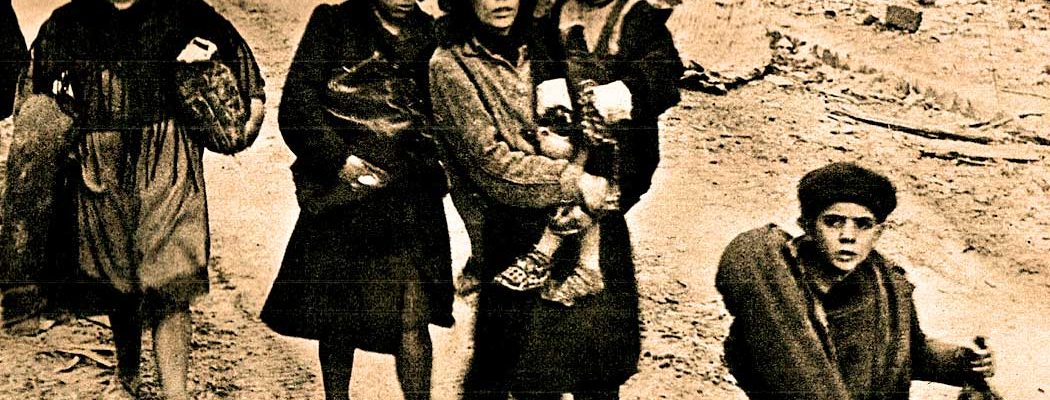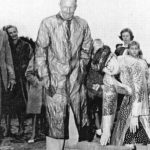 After Victory…Millions Displaced
After Victory…Millions Displaced
How Did First Pres Littleton Respond?
Starting in 1949, First Pres Littleton built “The Friendship House” to help refugees from around the world get settled in the Littleton area. From 1949 to 1979, from Hungarians to H’Mung, ten refugee families were resettled with friendship and love. Carolyn Wilkins was a member of the church at that time, and she recounts her story.
“The Friendship House” by Carolyn Wilkins
 Hey, I’m Carolyn Wilkins, a member of Littleton Presbyterian Church, which is now known as the First Presbyterian Church of Littleton. I came to this church many years ago and the heritage that this church has for 133 years that we’ve been in existence.
Hey, I’m Carolyn Wilkins, a member of Littleton Presbyterian Church, which is now known as the First Presbyterian Church of Littleton. I came to this church many years ago and the heritage that this church has for 133 years that we’ve been in existence.
It has many, many stories to tell and I can relate to one of them because I was here when it happened.
Back in 1949, Reverend Rusty Chandler proposed to the elders of the church that we sponsor a person who was displaced or a refugee from World War II. At that time they mulled it over, discussed it, and decided that they would do that if they could find housing. Now this was right after WWII and Littleton was a very small community. The Littleton Independent had a circulation of around 2,100-2,400 people and the town itself was small. The church, I do not have the exact number, but the church was between 200-300 membership, so it was small. And this was going to be a big undertaking.
In order to sponsor someone you had to have a “responsible citizen” and the church asked WC Thomas to sign the papers, which he did. They were signed and sent into the Presbyterian Church in NYC which would handle the process.
A building committee consisting of Stedman L. Stewart, M. E. Suits, Robert Peterson, Charles Robeck, and Kenneth Ellenberger was formed. Robert Nutting of the Littleton Lumber Company, treasurer; Mrs. Henry Teller, secretary, and Houstoun Waring of the Littleton Independent were elected. Both committees were under Dr. Chandler’s guidance.
As word got around what we were trying to accomplish, citizens of the community started to come forward. Mrs. George Saar donated two lots at 420 South Curtice Street (across the street from the old Rapp School). Gifts of money, household items, building materials, and labor were volunteered. The Sunday School at the church sold coupons for 25 cents each and the money from those coupons would go towards buying cinder blocks, from which the house was going to be built. The house was going to be two bedrooms, living room, and kitchen, and bath. As time went on, nothing seemed to be done on the New York end, with this building.
Mr. Heckendorf brought heavy equipment in to level the ground and to start with the foundation. All the community chipped in with doing things like bringing tea during the hot summer months while the work was being done. And cookies and lunches. And Rev. Chandler was here working on this house, almost every day of the week along with his other pastoral duties. The Rainbow Girls, the Masonic Temple, the Eastern Star, the DeMolay Boys which were all prominent organizations in the community at the time, did their part in leveling the ground, digging ditches, etc.
 As time went on, more and more people donated money. $5 was donated by one of the outstanding teachers in Littleton. $5 was a lot of money back in 1949, and there were many contributions like that. Small contributions, nickels and dimes, and work. Members of the community who were in business donated lumber, plumbing, time to install that, siding, plastering, beams for the ceiling. A call went out in July for people who were strong, mainly men and boys, who could come down and help Rev. Chandler raise the roof on the home. It became quite well known throughout the area and even one of the people on the committee from New York that came to see our Friendship House, as it was starting to be called. She came because the editor of the Denver Post at the time had contacted her to tell her about our Friendship House. At the time, only the walls and the windows were in – the roof could not be raised yet.
As time went on, more and more people donated money. $5 was donated by one of the outstanding teachers in Littleton. $5 was a lot of money back in 1949, and there were many contributions like that. Small contributions, nickels and dimes, and work. Members of the community who were in business donated lumber, plumbing, time to install that, siding, plastering, beams for the ceiling. A call went out in July for people who were strong, mainly men and boys, who could come down and help Rev. Chandler raise the roof on the home. It became quite well known throughout the area and even one of the people on the committee from New York that came to see our Friendship House, as it was starting to be called. She came because the editor of the Denver Post at the time had contacted her to tell her about our Friendship House. At the time, only the walls and the windows were in – the roof could not be raised yet.
Anyway, as time went on, we were to get a family called the Bodnars to be our first family, but there was red tape, as always back in those days – probably everything in triplicate. And they had to go through the Refugee Committee in Europe to get approval for a family, and apparently Mr. Bodnar had fought against the Russians when the invasion of Czechoslovakia took place, and so that apparently was a glitch in the hold-up that was keeping the family from coming.
In their place, just before Christmas in 1949, a family who had been cleared by the World Church Organization had a family with no place to put them. And so Rev. Chandler was contacted and said, “Yes we will take them.” And so, Mr. Ujvarosi and his daughter Suzanne came to Littleton. His wife and other child were coming later because Mrs. Ujvarosi had taken ill and could not travel at that time.
So they came and Suzanne, a 15 year old daughter, enrolled in Littleton High School. And that’s when I first met Suzanne. And then later her mother and younger sister came. In the meantime, we finally got word that the Bodnars were coming, it was just going to be a matter of time. Mr. Ujvarosi had found work at Heckethorn Manufacturing Company and they also had found work for Mr. Bodnar.
Finally, Friendship House was full. It was built with loving hands in the name of God for helping other people. That is my story and I am very proud of it.
Q&A with Pastor Cody
Q: How did building this house affect the community?
A: Littleton was always a fairly close-knitted community, as I remember, and we always helped one another, but this really brought so many together. Back in those days, the Catholics didn’t come to the church and the Protestants didn’t come to the Catholic Church. And we didn’t go to the Baptist Church, and they didn’t come to our church unless it was for a special occasion like a funeral, etc.
But this really brought the churches much closer together. All of the churches – there were three at the time that were active in the community – they helped each other. There were members from the other churches that came and helped dig ditches and brought food. I need to tell you that the different organizations and the different churches during this community came together and furnished the house with furniture, with plates and dishes, and lamps and electrical work, and wiring – all the things that go together to make a home. And it was a community effort of which the church sponsored.
Q: And so how did this affect you personally?
A: The year I met Suzanne, that she came to Littleton, she was 15 and they put her in the sophomore class at Littleton High School and I was a senior that year. And I went on and graduated and I went to Denver University and to my surprise when the yearbook for the college came out Suzanne had been voted queen, and she was a beautiful, beautiful young lady. And it was there that I got to know her better. Suzanne was there on a full scholarship and you have to remember that she was only in the high school in Littleton for two years because they moved her up a year. She was a very gracious lady, and I don’t know how she had the intelligence she had having lived through that terrible, terrible war. She was an inspiration to me.
Q: Do you think there are any lessons/parallels for today?
A: I am really amazed at the fact that the atmosphere in the United States is much the same as it was after the war, World War II. “Let’s not bring refugees into our country. They may be Nazis! And they may undermine our young ones. And how can we trust them? How can we know?” Well they’re doing the same thing today. You hear it every day on the news. And it’s not true. We have so much more technology today at our fingertips that we can go through and OK the people to come. And even some might slip through, but I would like to hope that through our Christian endeavors we can help these people and give them the American Dream.




Recent Comments